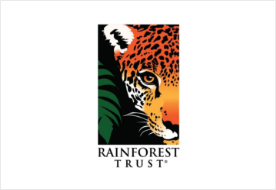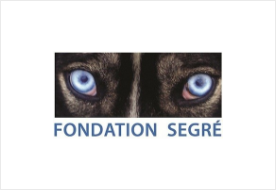Red pandas are an important species to their ecological community in the Eastern Himalayas. Their home range spans across one of the most biodiverse places in the world, making the protection of this habitat even more crucial.
Learn more about our conservation work.
The red panda's habitat consists mainly of temperate broadleaved forests with bamboo understories at altitudes ranging from 2400 to 3900 meters, mostly found in the Eastern Himalayas. They prefer areas with lots of tree cover, as they spend most of their times in the trees.
Access to bamboo is essential in red pandas' habitat as it makes up around 90% of its diet. While red pandas are primarily found in temperate broadleaved forests, they can also inhabit evergreen, deciduous, coniferous, and mixed forests with bamboo understories.
The bamboo plant family is extensive, with over a thousand different species. However, even when many of these species are found within a red panda's habitat, they will only favour one or two. They really are fussy eaters!
Red pandas can be found in the high-altitude forests of Nepal, Bhutan, India, China, and Myanmar on the southern edge of the Himalayas and neighbouring mountainous regions in the east.
Of the two species of red pandas, Ailurus fulgens fulgens is found on the western side of the range in Nepal, Bhutan, and India, while Ailurus fulgens styani is more commonly found in the east in China and Myanmar.
The total potential habitat for red pandas is estimated to be around 140,000 sq km, with China having the largest potential habitat, followed by India. However, due to habitat degradation, only around 58,000 sq km is currently inahbited by red pandas.
The red panda serves as an umbrella species for the Eastern Himalayan Broadleaf Ecosystem, one of the most biodiverse places in the world.
This ecosystem is home to more than just red pandas and bamboo; equally important species like the pangolin and himalayan black bear roam these forests.
As an umbrella species, the protection of the red panda helps protect the entire ecosystem. By studying red pandas, we can gain insight into the overall well-being and diversity of less-studied but equally as important species.
We protect the diverse species in this important ecosystem through our red panda conservation efforts and our mammal studies, funded by Rotterdam Zoo.
Habitat protection and restoration are crucial to our work here at RPN. In 2007, We started restoring habitat in eastern Nepal where we are establishing the PIT Red Panda Protected Forest. Now, we are expanding our conservation work across Nepal and into Bhutan.
In the heart of Kangchenjunga Singhalila Complex, one of the most biologically diverse places on Earth, is the densest population of red panda in Nepal. Filled with endangered species, blooming rhodedondrons, and unparalleled beauty, the Panchthar-Ilam-Taplejung (PIT) corridor is crucial habitat area.
However, human population growth and expanding development is threatening this precious forest, which has been degraded and fractured into fragmented patches.
Because of the importance of this area and the intensity of the threats to its health, RPN has strategically chosen the PIT-corridor as a focal point for our forest protection and restoration work.
We are establishing the PIT Protected Forest in this critical habitat, which will be the largest protected forest in Nepal and the first to be managed by a network of community forests.
The PIT Protected Forest will create approximately 11,500 km of uninterrupted habitat. This will link the existing protected areas in Nepal to India’s Singhalila National Park and Barsey Rhododendron Sanctuary. This area has been recognized as an important area for global biodiversity conservation by a number of leading international conservation organizations, including WWF, BirdLife International, and Conservation International.
Our community-based model is being expanded to seven new districts across Nepal, which make up half of the habitat available to red pandas in the country. This will ensure the connectivity of three protected areas: Dhorpatan Hunting Reserve, Shey Phoksundo National Park and Rara National Park.
Beyond Nepal, we have launched our first conservation project in Bhutan to help the country develop it's first Red Panda Conservation Action Plan. This project will address severe land degradation, red panda habitat loss, and herder wellbeing in the winter rangelands of Sakteng Wildlife Sanctuary (SWS) in remote eastern Bhutan.



